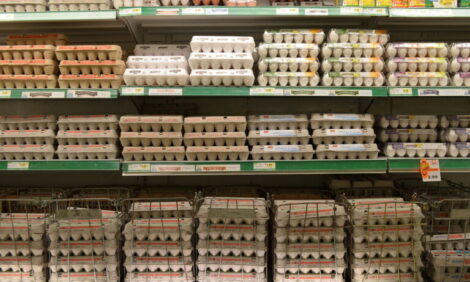



Selection for Improved Leg Health in Purebred Broiler Lines and Underlying Genetic Parameters
As a result of genetic selection, the prevalence of four leg conditions in purebred broiler lines has declined over the last 20 to 25 years, new research from Scotland shows.Leg health is an important component of broiler welfare and the economics of broiler production, according to Dr Dagmar Kapell and co-authors with Aviagen Ltd in Newbridge and the University of Edinburgh in Scotland.
In the journal, Poultry Science, recently, they describe a study of the development of leg health in three purebred commercial broiler lines over 25 years of selection as well as an investigation of the genetic background of leg health traits in current populations of these lines.
Leg health traits examined were deformities of the long bones and crooked toes, recorded since 1985, and tibial dyschondroplasia and hock burn, recorded since 1990.
The prevalence of crooked toes and hock burn decreased mainly in the first decade (range among lines -1.2 to -2.3 per cent and -1.3 to -1.5 per cent per year, respectively), after which it stabilised at low levels.
The prevalence of long bone deformities and tibial dyschondroplasia decreased by -0.6 to -0.9 per cent and -0.4 to -1.2 per cent per year, respectively.
Genetic parameters were estimated using data from four recent generations.
The bodyweight ranged from 2.0kg to 2.4kg at five weeks of age; the prevalence of long bone deformities, crooked toes, tibial dyschondroplasia and hock burn from 8.6 to 12.9 per cent, 0.6 to 2.6 per cent, 4.6 to 8.0 per cent, and 4.0 to 12.2 per cent, respectively.
Estimates of heritability were 0.04 to 0.07 for long bone deformities, 0.01 to 0.10 for crooked toes, 0.10 to 0.27 for tibial dyschondroplasia and 0.06 to 0.09 for hock burn (all SE<0.01).
Estimates of the genetic correlations between long bone deformities and crooked toes were 0.11 to 0.43 (all SE<0.09), between these traits and hock burn were negligible, and of tibial dyschondroplasia with long bone deformities, crooked toes and hock burn were -0.26 to 0.16 (all SE<0.11).
Estimates of genetic correlations between the leg health traits and bodyweight were slightly to moderately unfavourable, ranging from 0.09 to 0.37 (all SE<0.06).
The differences between the lines suggest that strategies for simultaneous improvement of all traits tailored for each line individually have been effective, according to Kapell and co-authors.
They added that their research demonstrates the long-term effectiveness of selection for improving leg health in broilers and highlights that, despite somewhat unfavourable genetic correlations with bodyweight, these traits can be improved simultaneously in a balanced breeding programme.
Reference
Kapell D.N.R.G., W.G. Hill, A-M. Neeteson, J. McAdam, A.N.M. Koerhuis and S. Avendaño. 2012. Twenty-five years of selection for improved leg health in purebred broiler lines and underlying genetic parameters. Poult. Sci. 91(12):3032-3043. doi: 10.3382/ps.2012-02578
Further ReadingYou can view the full report by clicking here. |
February 2013









